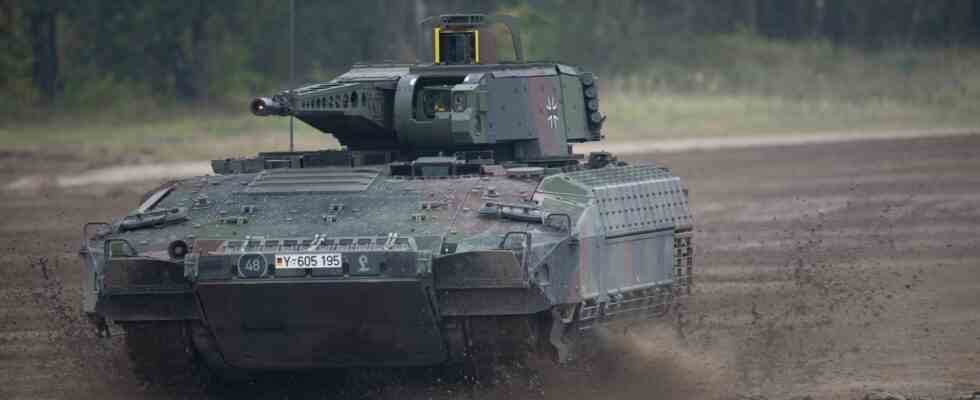Status: 04/10/2022 06:37 a.m
With a special fund of 100 billion euros, a lot of things should get better in the Bundeswehr. Can this work? The list of defects is long. Many armaments projects failed or became more expensive than expected.
The budget of the Bundeswehr has increased continuously since 2014. One reason for this was the Russian annexation of the Crimean peninsula. But the troops still suffer from serious equipment shortages. Now with the 100 billion everything should be better. But fundamentally something has to change. In recent years, many armaments projects have failed, been put off or become more expensive.
The infantry fighting vehicle “Puma”
The tank with the wildcat name has easily made it into the procurement history books: almost two decades have passed since the first project contract in 2002 and the delivery of all models – including billions in cost increases, as well as one or the other oddity: you had it In the meantime, however, it was not without amazement that it was found that armored infantrymen on the back seats – unlike the previous model “Marder” – were not allowed to exceed a height of 1.84 meters for reasons of space.
When the new construction of the “Puma”, which had long been mocked as a “problem tank”, was finally delivered in large numbers to the troops in 2020, the generals responsible rated the operational readiness as “unsatisfactory”. Only last year did the troops then declare the Puma, as it is called in technical jargon, as “tactically suitable for combat”. Now the troops praise the device as the “most modern infantry fighting vehicle in the world”.
“Gorch Fock” and Co
Probably the best-known naval ship that hadn’t sailed for a long time was the “Gorch Fock”: In 2015 she came into the dock, estimated repair costs: ten million euros. An amount that subsequently swelled to 125 million. Which in the meantime raised doubts as to whether the school ship should ever be allowed to plow through the world’s oceans again, what she’s doing today.
But the Bundeswehr must have cost the frigate with the type designation F125 much more time, money and nerves. Initially announced as the future “Pride of the German Navy”, it was not only delivered with a delay of several years, but also with defects. Estimated additional costs: one billion euros.
The fact that just a few weeks ago the news that Germany had spent 250 million euros more on two tankers than they were actually worth somehow fitted into the picture.
A400M and G36
Just naming these abbreviations made those responsible sweat for a long time. When the first gigantic A400M transport plane arrived at the Air Force in 2014, it was already five years late – and had a long way to go with technical problems. In 2019, the Bundeswehr sent two machines back to Airbus – because of loose screws on the propellers. The giant of the air is now being praised for its work on the Kabul evacuation mission, but this cannot hide the fact that only about ten of the 30 machines in total could be used last year.
The decision as to which rifle the troops should one day hold in their hands also dragged on for an agonizingly long time – as the successor to the G36, which should have been retired long ago. The fact that the two competing suppliers Haenel and Heckler&Koch are still fighting in court also has a lot to do with a sloppy tendering process. As Marie-Agnes Strack-Zimmermann, Chair of the Defense Committee, once put it, the rifle was supposed to be something like the soldiers’ “knife and fork”. Even the supposedly simple cutlery selection takes longer than expected.
Where is the problem?
In the past, armaments companies and the Ministry of Defense liked to blame each other: the manufacturers complained that the customers kept coming up with new suggestions for improvement and would not accept anything below the “platinum solution” for the device. Politicians criticized that the corporations were deliberately testing the patience and wallets of the solvent state.
So it’s no wonder that “off-the-shelf” solutions – such as the US F35 fighter jet or the Israeli missile shield Arrow 3 – are being discussed for some of the upcoming acquisitions. Hardly anyone denies that there is an urgent need for reform and acceleration at the Bundeswehr Procurement Office (BAAINBw). If this does not happen, the warning goes, the effect of the promised 100 billion euro package for the Bundeswehr could fizzle out faster than expected.
Bankruptcies, bad luck and tanks – material problems of the Bundeswehr
Kai Küstner, ARD Berlin, April 8, 2022 2:28 p.m

